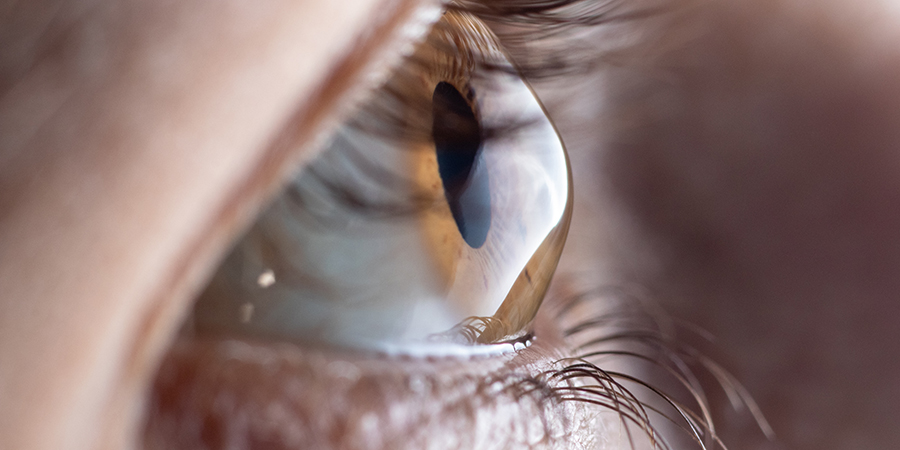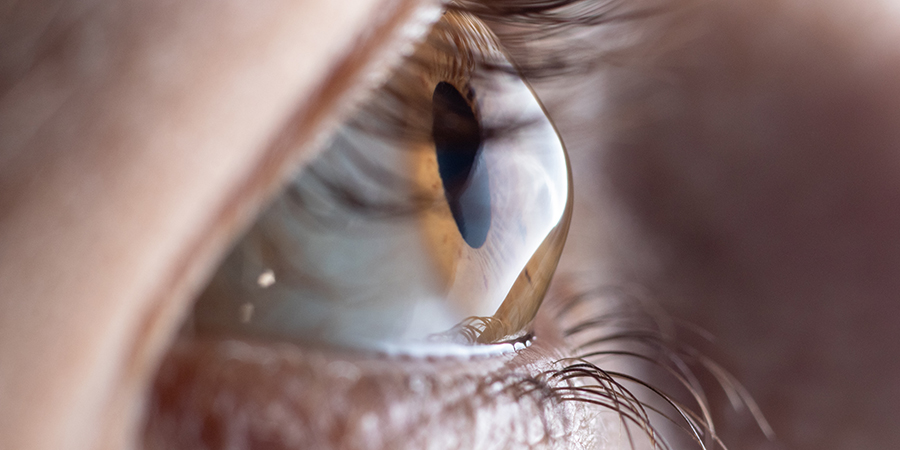See How to Treat and Prevent Keratoconus | Eyes Now
In this blog post you will find out all you need to know about keratoconus including, causes, symptoms, and treatment. If you are suffering from keratoconus, schedule an appointment with Eyes Now today.


What is Keratoconus?
Keratoconus is when the shape of the cornea becomes altered. The cornea is the front of your eye’s transparent outer layer. The cornea’s middle layer, which is also its thickest layer, is primarily made of collagen, which helps maintain its normal, rounded shape and makes it robust and flexible. If you have keratoconus, the cornea thins and bulges into an atypical cone form. This can heavily impair vision.
In most cases, keratoconus starts after adolescence and worsens until the mid-30s. It is impossible to forecast whether or how quickly the disease will advance. Typically, keratoconus affects both eyes, with one being affected worse than the other.
Signs of Keratoconus
As keratoconus worsens, the signs and symptoms may alter. They consist of:
Distorted or blurry vision
Increased sensitivity to glare and bright light, which can make nighttime driving challenging
A need for routine adjustments to eyeglass prescriptions
Sudden visual deterioration or clouding
Halos and glares around lights
Causes of Keratoconus
Although genetic and environmental factors are considered to be involved, the exact cause of keratoconus is unknown. About 1 in 10 of those who suffer from keratoconus have a parent who also has the condition.
When to see a Doctor for Keratoconus
If your eyesight is rapidly deteriorating, it may be due to an abnormal curvature of the eye. Consult an ophthalmologist or optometrist (astigmatism). During routine eye exams, he or she might also be on the lookout for keratoconus symptoms. If you notice your eye changing shape, it is also recommended to see a doctor.
Can you prevent Keratoconus?
Most incidents cannot be avoided. However there are steps you can take to reduce your chances of developing Keratoconus:
Wearing sunglasses to shield your eyes from UV rays
Ensuring proper fit for your contact lenses.
Receiving medical attention for any type of eye discomfort (for example, from allergies)
refusing to rub your eyes
Can Keratoconus be Treated?
In the most severe cases, the treatment options become more serious. A corneal ring is when a doctor implants a C-shaped ring into the cornea to help flatten it out and return it to the natural shape. This takes about 15 minutes. The last option is a corneal transplant which takes about an hour to perform, followed by a 3-6 month recovery period of blurry vision. This also requires medicine to prevent rejection of the new cornea, and almost always requires contacts or glasses to be worn afterwards. While this may seem like an intense treatment option, it is crucial that you take care of your eyes and make sure your vision is the best it can be.
Keratoconus actually has multiple different treatments available. In the early stages, contact lenses and glasses can be provided to help improve vision. Later on, a corneal collagen cross-linking can be done. This is an in-office procedure where a vitamin B solution is applied to the affected eyes, followed by the application of UV light. This solution helps repair the collagen bonds and restore and preserve the shape of the cornea. It can even improve vision!
CONTACT EYES NOW AND SCHEDULE AN APPOINTMENT
If you are dealing with rapidly deteriorating vision, or noticing a change in the shape of your eye, contact Eyes Now and schedule an appointment today, visit our website or give us a call at any of our three locations!

